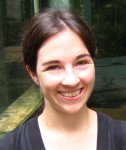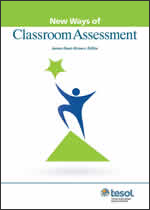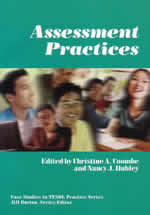Academic Word Use in the ESL Classroom
by Cassandra Hummel
 Postsecondary ESL students benefit greatly from academic vocabulary instruction because of the highly specialized lexis and tasks used in higher education. In order to increase students’ knowledge of and successful use of academic words, teachers should focus on building metalinguistic awareness of university-task assignments and field vocabulary.
Postsecondary ESL students benefit greatly from academic vocabulary instruction because of the highly specialized lexis and tasks used in higher education. In order to increase students’ knowledge of and successful use of academic words, teachers should focus on building metalinguistic awareness of university-task assignments and field vocabulary.
This type of instruction, though, is not always easy to do. Since these academic words qualify as generally low-frequency words due to their scholastic nature, they appear more complex and students are most unfamiliar with them. The following activities are designed to build a conscious awareness of words that require more attention and focus in order to better retain their meaning and use. Teachers can start by performing an assessment to determine which fields of study are represented in the classroom and classifying them under a general discipline such as humanities, natural sciences, or business.
Crosswords (to build vocabulary across disciplines)
These words can be used from the academic word list (AWL). The teacher hands a different set of previously studied vocabulary words to each student. Students then create their own crossword puzzle with the given vocabulary words providing brief easy-to-understand definitions as clues. Next, students trade their crossword puzzles with someone who used different words. The teacher can control the difficulty level of the assignment by starting off with fewer than 10 words in each set and increasing to 15 or more words in the future. Word banks can be provided to aid students.
Synonym/Antonym Chart (to build vocabulary across disciplines)
These words can be used from the AWL and should be previously studied. The class can work with 10 words from the AWL at a time. The teacher begins by writing the ten words on the board. Then each student is given a medium-sized poster board, which is divided into three columns and ten rows. Students are instructed to write the ten vocabulary words down the middle column. The left column represents synonyms of each vocabulary word, and the right column represents the antonyms. As a class, and independently, students fill in appropriate synonyms and antonyms for each vocabulary word. Teachers can work through the AWL alphabetically so that at the end of the semester, if students have completed several charts, they will already be in alphabetical order and it will be easy to reference words. An example of a set of words across a row may look like this:
|
personal |
individual |
collective |
|
noteworthy |
significant |
trivial |
Download the synonym/antonym worksheet (.docx) here.
Connotation Chart (to build vocabulary for evaluation)
This activity is meant for words that are used to review and critique articles, reports, or texts, and usually qualify as adjectives or adverbs. A connotation chart will help students use the appropriate feeling of a word to reflect his or her interpretation of the material. Teachers pass back a medium-sized poster board, which is divided into three columns and ten rows. The middle column is designated for neutral evaluation words. The students, working with ten vocabulary words at a time, write the words down the center column. The right column represents similar words with a positive connotation. Students can work as a class or independently to brainstorm appropriate words. The same is done for the left column, which represents words with a negative connation. An example of a set of words across a row may look like this:
|
notorious |
controversial |
thought-provoking |
|
dramatic |
emotional |
passionate |
Download the connotation worksheet (.docx) here.
Article Analysis (to build field and task specific vocabulary)
This activity should come after some instruction on how to recognize important words in a text. This can include training students to focus on thesis and topic sentences in order to note repetitive words and specific naming words. To begin the analysis, the teacher passes out various articles to students according to their field of study or allows students to bring in their own article. Students read through their articles and underline words that reflect research, analysis, and evaluation, in addition to terms deemed field-specific. Next, students break into groups and discuss their articles and the use of vocabulary terms. Then, as a class, comments can be discussed and vocabulary words repeated across articles can be compared. Finally, students can write their own evaluation of the article or study and turn in their work as an assignment.
Guest Speaker (adapted from Coxhead, 2012, to build field specific vocabulary)
Teachers can ask guest lecturers or representatives of various disciplines to speak in front of the class and to provide a list of articles or readings addressed in class. Students should be encouraged to ask questions about research and tasks expected of their field and to take notes on speeches. The teacher can then assign students to complete research or written insight on an article using appropriate vocabulary for field.
Ultimately, these activities provide students with opportunities for meaningful use of academic vocabulary. By building their students’ metalinguistic awareness of those words that are considered important to interpretation and comprehension, teachers not only improve students’ reading of a text but also completion of academic tasks. Of course, with an increased knowledge of vocabulary will come an increase in confidence and motivation. As Coxhead (2012) stresses, another benefit of focusing on vocabulary is that having the ability to use vocabulary properly in writing and speaking may suggest that one is a competent member of the academic community.
References
Coxhead, A. (2012). Academic vocabulary, writing and English for academic purposes: Perspectives from second language learners. RELC Journal: A Journal of Language Teaching and Research, 43(1), 137-145.
____________________
Cassandra Hummel is currently a graduate student at California State University Fullerton and pursuing a degree in education with an emphasis on TESL. She works mostly with high school international students to prepare them for university enrollment. Her work experience has sparked an interest in the instruction of academic words in the ESL classroom.
TESOL Blogs
Interested in writing a blog for TESOL?
Contact
Tomiko Breland with your idea or for details.
Check out the latest TESOL Blogs:
|
Unearthing the Secrets of Successful Adult ELLs, by Alexandra Lowe
 Years ago, a social worker friend taught me that the best way to help people tackle difficult challenges was to focus on past instances of success rather than on failure. Success, he told me, was worthy of detailed investigation: What factors contributed to successful outcomes? And how can we encourage more of what has worked well in the past for others who are similarly situated? Years ago, a social worker friend taught me that the best way to help people tackle difficult challenges was to focus on past instances of success rather than on failure. Success, he told me, was worthy of detailed investigation: What factors contributed to successful outcomes? And how can we encourage more of what has worked well in the past for others who are similarly situated?
When I began teaching English as a second language, this advice came to mind. As I watched my adult immigrant students struggle to master our verb tenses or wrap their tongues around our sound system, I decided that it might be useful to investigate how successful adult ELLs went about achieving fluency in English. What were the secrets of their success? What strategies had worked well for them? Read More. |
|
Online Education: Ready, Set, Learn!, by Tara Arntsen
 Perhaps as a teacher you’ve found yourself thinking about how great it would be to go back to school and learn more about different aspects of the field of education, brush up on some of your skills, or even learn something entirely new. Or not. Either way, it’s not a bad idea. Let me introduce Coursera and edX, which are both websites that offer free courses from top-notch universities around the world. Read More. Perhaps as a teacher you’ve found yourself thinking about how great it would be to go back to school and learn more about different aspects of the field of education, brush up on some of your skills, or even learn something entirely new. Or not. Either way, it’s not a bad idea. Let me introduce Coursera and edX, which are both websites that offer free courses from top-notch universities around the world. Read More.
|
|
Global Resources in ESP: Two books on Professional Communication, by Kevin Knight
 Hello, ESPers worldwide! Hello, ESPers worldwide!
I am more excited than ever about the future of ESP because there is a growing need worldwide for communication skills in professional and academic settings. At TESOL 2013, I came across a wonderful book at the Routledge booth:
S. Schnurr (2012). Exploring Professional Communication: Language in Action. Abingdon, England: Routledge.
If you are new to the field of professional communication, I highly recommend it.
At TESOL, I find that many members have acquired expertise in training and in obtaining stakeholder agreement, which is necessary for creating and implementing training programs for many different types of organizations. Read More. |
TESOL Bookstore

Now It’s Easy to Assess Your English Language Learners
TESOL Press Books on Assessment Can Help
 New Ways of Classroom Assessment, revised
New Ways of Classroom Assessment, revised
James Dean Brown, Editor
In this revised edition in the popular New Ways Series, teachers have once again been given an opportunity to show how they do assessment in their classrooms on an everyday basis. This collection of ideas was contributed by teachers whose aim was clearly to help their students. Consequently, the activities are thoroughly integrated into the language teaching and learning processes. More than 100 activities enlighten both students and teachers about the effectiveness of their language learning and teaching but do not stand out as different, formal, threatening, or interruptive in the classroom.
 Assessment Practices
Assessment Practices
Christine Coombe and Nancy Hubley, Editors
For language educators, teachers, and testers, these studies analyze assessment design, implementation, and review for classrooms, formal tests, programs, curricula, and self-assessment in global scenarios.
Toll Free: 888-981-0041
E-mail: tesol@brightkey.net